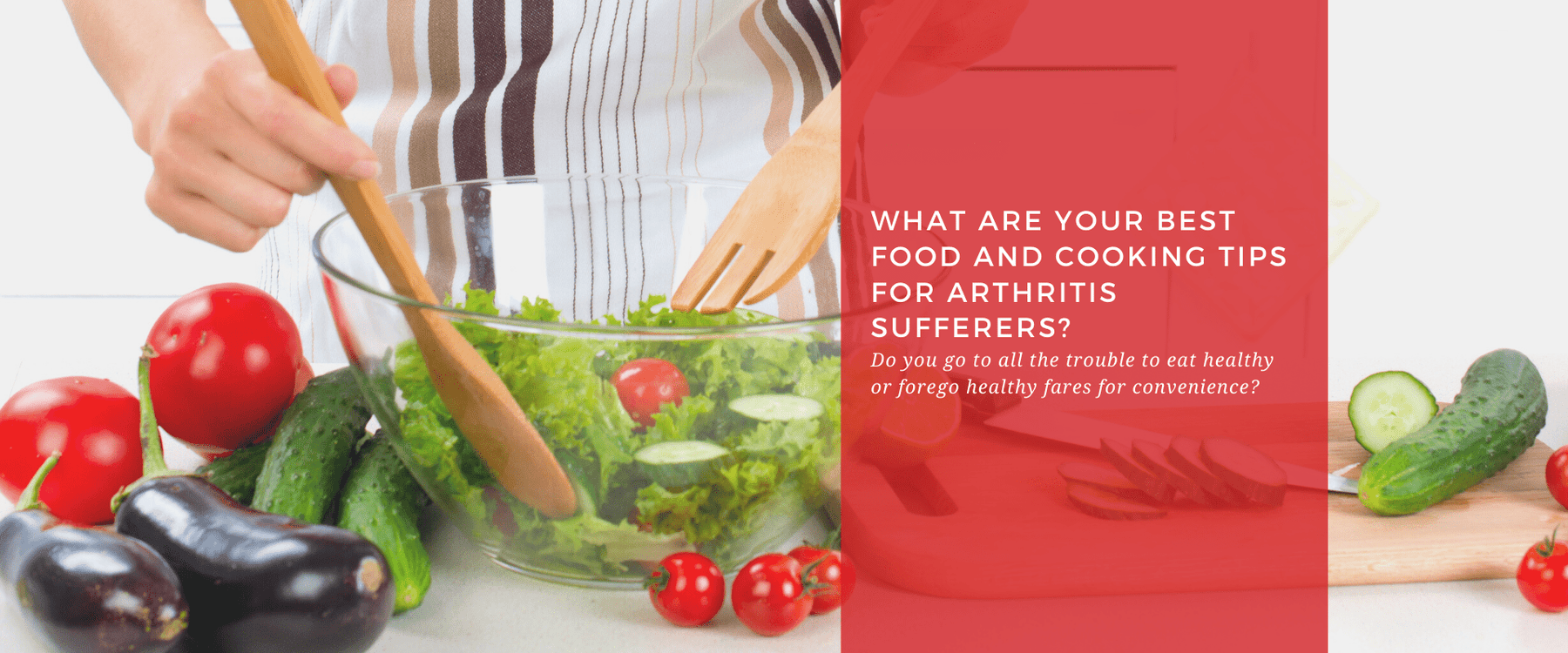With over 1 million orders

What Are Your Best Food and Cooking Tips for Arthritis Sufferers?
We often talk about how your diet and food choices affect your arthritis. Some foods are known to compound common symptoms, leading to inflamed joints and causing you to feel greater pain. Other ingredients are known for helping to minimize swelling and boost nutrition. In fact, for a full and more comprehensive look the best foods for arthritis that you should make a point to include in your daily meals, you can take a look at this video below:
Many of us are already familiar with these. Yet despite being informed of what foods to avoid and what ingredients to indulge in, many of us still settle for meals that are less than beneficial for our condition. Why? Because when you already suffer from aching joints and chronic pain, something as simple as preparing a healthy meal can become a difficult and monumental task. It’s easier to grab whatever is in the pantry, regardless of how it will affect our joints, when we’re already in pain anyway. What good would adding strain to our hands and body for?
To that end, we wanted to create a post that’s more focused on what you can do to save time and energy in the kitchen—while still making sure that you choose the best food for arthritis and get all the health benefits of the right ingredients.
Let’s start with this general tip—
You won’t be up to cook 24/7. There will be days when it will feel like a painful chore. But there will be days when your joints are cooperative and you actually can move freely and easily around the kitchen. On these days, be sure you make extra.
Frozen meal options for flare ups—
On days where our arthritis is flaring up, our go-to is a frozen meal—they’re quick, easy, and immensely filling. They’re also notoriously high in sodium and low on fiber. But that’s not to say you don’t have any good options—you just have to know what to look for.

Make sure that you look for frozen meals with—
· Less than 800mg of sodium
· A minimum of 15g of protein
· At least 4g of fiber
This should give you a balanced, easy to prepare meal.
To boost your nutrient intake, try supplementing your frozen dinner with a slice of whole grain bread or a cup of frozen vegetables.
Stocking up on every day convenience foods—
For those who don’t have to worry about maintaining their weight or food causing their joints to get inflamed, the grocery is mecca for convenient, ready-to-eat foods. But most of these options are processed, which means they’re loaded with a lot of sodium. And that’s the main thing that anyone with arthritis have to watch out for.
So instead of grabbing that bag of chips or crackers, choose instead to stock up on whole grains, dairy, fruits and vegetables. Opt for a can of lentils, black beans, or split pea soup (invest in an electric can opener to make it easy to open). Ready-made foods like rotisserie chicken, breakfast burritos, or sushi are also good options. Pre-marinated fish like tuna and salmon fillets are also available and easy to make.
Easy to blend snacks—
Drinks and smoothies are quick, easy to make and stock. It’s also the quickest way to include all the anti-inflammatory fruits or vegetables in a single, healthy serving. Pre-made options however aren’t very satisfying and lack adequate protein.
Still, smoothies are convenient. Simply pair them with a piece of whole-grain toast or a fruit cup will help boost their nutritional value and make for a more complete arthritis-friendly meal.
For more diet and healthy eating tips, be sure to regularly check out our blog. If you have your own tips to share, do tell us all about it and leave a comment below.
